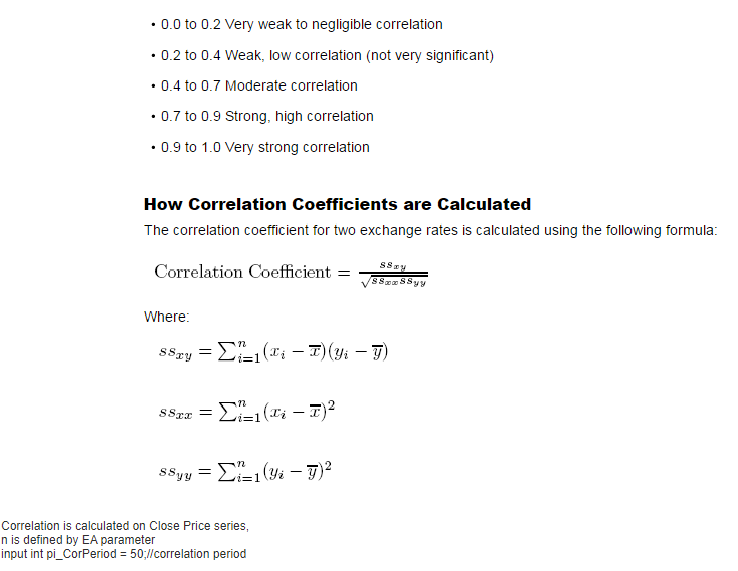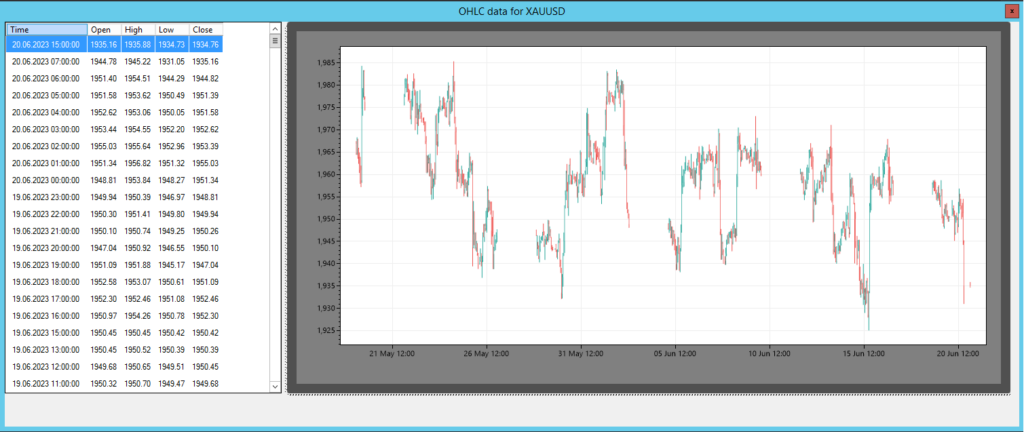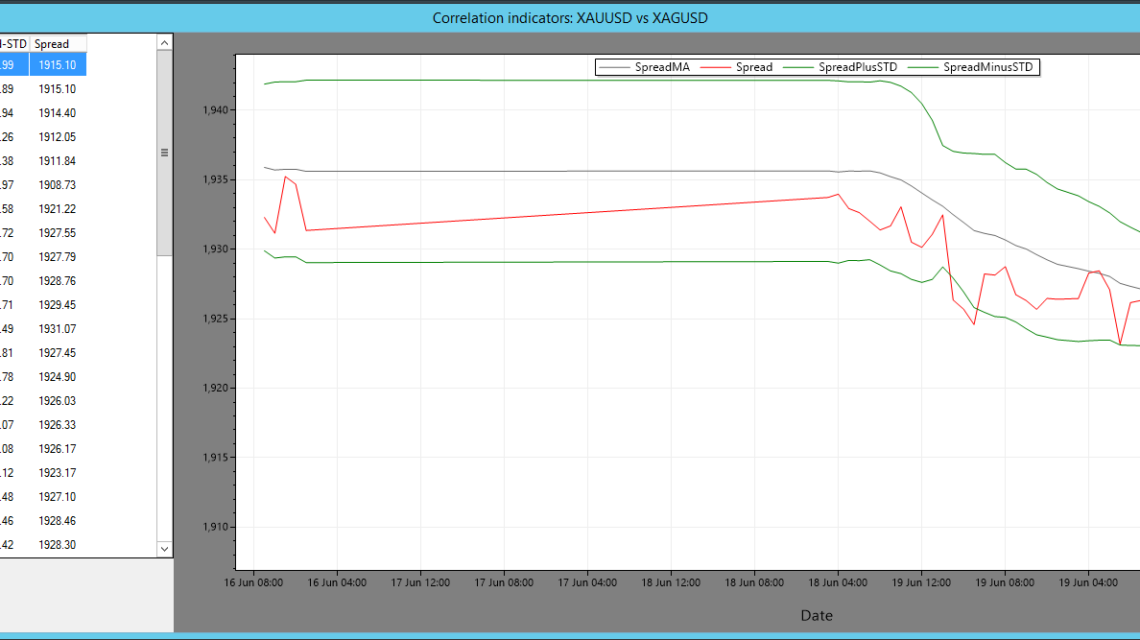(English) Understanding Statistical Arbitrage: A Path to Profitable Trading 2023年06月21日 – Posted in: Arbitrage Software, cryptoarbitrage software – Tags: arbitrage software, forex arbitrage, statistical arbitrage, statistical arbitrage bot, statistical arbitrage software
Statistical arbitrage, often called “stat arb,” is a popular quantitative trading strategy widely employed by hedge funds and proprietary trading firms. The fundamental concept involves exploiting pricing inefficiencies between related financial instruments. Traders leveraging stat arb rely on complex mathematical models to identify trading opportunities, making this strategy an aspect of algorithmic trading.
Origins of Statistical Arbitrage
Statistical arbitrage had its roots in the 1980s when it was pioneered by Wall Street’s quantitative analysts, colloquially known as ‘quants.’ The strategy was initially applied within equities markets, where pairs of stocks were selected based on their co-integration – a statistical property indicating that the price gap between the two stocks is mean-reverting over time. Since then, stat arb has evolved and been adapted to various other markets, including forex and cryptocurrencies.
The Core Principle
Statistical arbitrage relies on mean reversion principles and the law of large numbers. The underlying belief is that the relative prices of financial instruments that are historically correlated will revert to their mean over time. This is where statistical arbitrage occurs – it capitalizes on price discrepancies between these correlated instruments when they deviate from their historical norm.
For instance, consider two stocks that have moved together historically. If their prices diverge – one increases in price, and the other decreases – a statistical arbitrageur would sell short the outperforming stock and buy the underperforming one, betting that the “spread” between the two would eventually converge.
Spread – to the price difference or discrepancy between two related financial instruments.
In statistical arbitrage, the term ‘spread’ typically refers to the price difference or discrepancy between two related financial instruments. These could be two different stocks, futures contracts, forex pairs, or even cryptocurrency tokens.
For example, one might track the spread between two historically co-integrated stocks in a pair trading strategy (a common form of statistical arbitrage). When the spread, or the difference in their prices, deviates significantly from its historical mean (average), it signals an opportunity to trade.
Suppose the spread widens too much, indicating one stock is overpriced and the other is underpriced relative to their historical relationship. In that case, a trader may sell short the overpriced stock and buy the underpriced one. Conversely, if the spread narrows excessively, they would do the opposite.
The spread is expected to be mean-reverting in statistical arbitrage, meaning it fluctuates around a long-term average value. Traders expect that when the spread deviates significantly from this mean, it will eventually return to it, allowing them to profit from this reversion.

Pic. 1 – SharpTrader™ Spread indicator
In the SharpTrader™ Arbitrage software, the Spread Indicator is utilized to visualize the correlation between two assets. The calculation of the correlation involves the following components:
- Spread: This refers to the numerical difference or distance between the values of two assets.
- SpreadMA: It represents the moving average of the spread over a specific period, determined by pi_SpreadMA_Period.
- STD (Standard Deviation): It calculates the classic standard deviation of the spread relative to SpreadMA. The number of observations used is equal to pi_SpreadMA_Period.
To trigger the opening of trades, the software follows the principles of statistical arbitrage theory.
A little bit of theory about correlation calculation

Statistical arbitrage – correlation matrix
A correlation table, also known as a correlation matrix, is a table that shows the correlation coefficients between many variables. Each cell in the table shows the correlation between two variables. The value is in the range of -1 to 1.
If two variables have a correlation of 1, they move in the same direction, i.e., when one increases, the other increases, and vice versa. This is known as a perfect positive correlation.
If two variables correlate -1, they move in opposite directions, i.e., when one variable increases, the other decreases, and vice versa. This is known as a perfect negative correlation. A correlation of 0 means that no relationship exists between the variables.
Here’s a simple example of a correlation table for three variables: A, B, and C:

Pic. 2 – Example of correlation table
In this table, the correlation between variables A and B is 0.5 (a moderate positive correlation), while the correlation between A and C is -0.7 (a strong negative correlation). The diagonal of the matrix from the top left to the bottom right is always 1 because a variable is perfectly correlated with itself.
These tables are widely used in various fields, including finance, where they help in determining the relationship between different financial variables or the returns of different assets, useful for portfolio diversification and risk management.
You can generally create this correlation matrix using statistical software or programming languages like Python or R. Here’s a simple way to do it with Python using the pandas and numpy libraries:
import pandas as pd
import numpy as np
# Assuming you have historical data in two lists
crude_oil_prices = […]
texas_oil_prices = […]
# Create a DataFrame
df = pd.DataFrame({‘Crude Oil’: crude_oil_prices, ‘Texas Oil’: texas_oil_prices})
# Calculate the correlation matrix
correlation_matrix = df.corr()
print(correlation_matrix)
This script will output a 2×2 correlation matrix with the correlation coefficients between crude oil and Texas oil prices.
Implementing the Statistical Arbitrage Strategy
The implementation of statistical arbitrage is a complex task. It requires sophisticated statistical tools and models, high-speed computational systems, and advanced algorithms. The approach involves:
- Pair Selection: The first step is identifying pairs of assets that are historically correlated. This is typically done using statistical methods like co-integration tests.
- Threshold Determination: Next, traders establish upper and lower thresholds for divergence. Asset prices deviate beyond these thresholds, triggering a trading signal.
- Trade Execution: When a trading signal is triggered, the trader executes the trades, buying the underperforming asset and selling short the outperforming one.
- Trade Exit: When the prices of the two assets converge (i.e., the spread reverts to the mean), the positions are closed.

Pic. 3 – SharpTrader™ Statistical arbitrage built-in strategy “Instruments & Orders” window.

Pic. 4 – SharpTrader™ Statistical Arbitrage quotes and graphs
Risks and Limitations
Like any trading strategy, statistical arbitrage is not without risk. One of the most significant risks is “model risk” – the potential for the mathematical models to be based on invalid assumptions.
Moreover, the strategy’s success also heavily relies on the speed of execution, as price inefficiencies can disappear in milliseconds. This reliance on speed approaches is more suited to algorithmic trading systems than individual traders.
The Future of Statistical Arbitrage
With financial markets becoming more efficient and automated, the future of statistical arbitrage lies in developing more sophisticated algorithms and models, machine learning, and artificial intelligence. As the pace of technological innovation continues, so will the evolution of statistical arbitrage.
In conclusion, statistical arbitrage, with its complex mathematical models and reliance on high-speed execution, offers a technologically advanced approach to trading. Despite the challenges and risks, it remains an attractive strategy due to its potential for consistent, low-risk profits.
The application of Artificial Intelligence (AI) in statistical arbitrage has opened up new avenues to enhance trading strategies and improve their predictive accuracy. Machine learning, a subset of AI, is especially useful in identifying complex patterns and making forecasts based on large datasets. Here’s how you can use AI for statistical arbitrage:
Data Collection: Gather historical price data of the financial instruments you’re interested in. This data might include open, high, low, and close prices and trading volumes. It could also incorporate relevant macroeconomic data, such as interest rates or GDP figures if these are considered significant for the traded assets.
Feature Engineering
Use this data to create a set of features (input variables) for your AI model. This could involve calculating technical indicators, such as moving averages or RSI, or creating variables representing the price difference or ratio between pairs of assets.
Model Training
Feed these features into a machine learning model, such as a neural network or support vector machine, to predict future price movements or spread between your assets. The model will learn from the patterns in your historical data.
Model Validation
Validate your model’s performance using out-of-sample data. This data not used during the training process will give you a better understanding of how your model will perform in live trading.
Trade Signals: Use the model to generate trade signals. For instance, if the model predicts the narrow spread between two assets, you might buy the underperforming asset and sell the outperforming one short.
Risk Management
Always keep a risk management strategy in place. AI models, like all trading strategies, could be better and can make incorrect predictions. Limiting your risk on each trade and setting up stop losses is crucial.
Model Updating
Continuously monitor your model’s performance and update it with fresh data. The financial markets are dynamic, and a model that performed well in the past may only sometimes do well in the future. Regular updates and adjustments are crucial to maintaining the model’s performance. Remember, while AI can enhance your trading strategy, it’s not a silver bullet and doesn’t guarantee success.
 English
English Deutsch
Deutsch العربية
العربية 한국어
한국어 中文
中文




16 Comments
Douglas Fut 11月 25, 2023 - 15:21
What are some risks and limitations associated with statistical arbitrage trading?
boris 1月 23, 2024 - 19:23 – In reply to: Douglas Fut
Risks in statistical arbitrage are multifaceted. Model errors can arise from incorrect assumptions or data inaccuracies, leading to faulty trading decisions. Market changes, such as sudden economic shifts or news events, can disrupt historical price relationships, rendering models ineffective. Liquidity constraints are another risk, as the ability to quickly enter and exit positions is crucial in stat arb; any limitation here can lead to significant slippage in trade execution, impacting statistical arbitrage trading profitability .
Keenansname 11月 25, 2023 - 15:21
How is artificial intelligence shaping the future of statistical arbitrage?
boris 1月 23, 2024 - 19:29 – In reply to: Keenansname
Artificial intelligence (AI) significantly boosts the capabilities of statistical arbitrage strategies by enabling more complex data analysis and real-time decision making. AI algorithms can process vast amounts of data at unprecedented speeds, uncovering hidden patterns and correlations that might be invisible to traditional statistical methods. This advanced data analysis leads to more accurate predictions of price movements. Additionally, AI can adapt to changing market conditions, continuously learning and optimizing strategies for better performance. In our article ADVANCED AI OPTIMIZATION TECHNIQUES FOR LATENCY ARBITRAGE STRATEGIES IN SHARPTRADER we described how to use AI for latency arbitrage parameters (sets) optimization. We will also implement this possibility for stats arbitrage ASAP.
Roberta ciff 11月 26, 2023 - 23:22
The article “Understanding Statistical Arbitrage: A Path to Profitable Trading” from BJF Trading Group is an insightful and thorough exploration of statistical arbitrage. It skillfully demystifies complex concepts like mean reversion, correlation, and the impact of AI in trading strategies. The blend of historical context and practical application makes it an invaluable resource for both novice and experienced traders interested in statistical arbitrage trading. This article serves as a great starting point for anyone looking to delve into the nuances of stats arbitrage in the modern trading landscape.
boris 1月 23, 2024 - 21:00 – In reply to: Roberta ciff
Thanks Roberta.
AnthonyBap 11月 27, 2023 - 17:27
What steps are involved in implementing a statistical arbitrage strategy?
boris 1月 23, 2024 - 19:20 – In reply to: AnthonyBap
Implementing a statistical arbitrage (stat arb) strategy extends beyond just identifying correlated securities and modeling their price relationships. It also involves sophisticated risk management and the use of advanced technologies for trade execution. Traders need to continuously monitor and adjust their models to account for changing market conditions. Furthermore, the execution of trades based on predicted price convergence requires high-speed trading systems to capitalize on fleeting market opportunities, as well as rigorous back-testing to ensure the strategy remains viable under different market scenarios.
HaroldFef 11月 27, 2023 - 21:34
What are the key components involved in calculating the correlation in statistical arbitrage trading?
boris 1月 23, 2024 - 19:18 – In reply to: HaroldFef
Calculating correlation in statistical arbitrage involves a detailed analysis of historical price relationships between securities. This process includes examining past price movements and determining how closely these movements are related. It’s essential in identifying pairs or groups of stocks whose prices have moved together historically. Advanced statistical techniques, including regression analysis and standard deviation calculations, are often used to quantify the strength and consistency of these relationships, which are vital for predicting future price movements in a stats arbitrage trading.
Charlesgropy 11月 27, 2023 - 21:35
How is the term ‘spread’ defined in the context of statistical arbitrage?
boris 1月 23, 2024 - 19:15 – In reply to: Charlesgropy
In statistical arbitrage trading, the term ‘spread’ refers to the price difference between correlated securities. This spread is central to strategies like pairs trading, where two historically correlated assets are monitored. When the spread between these assets widens due to temporary market inefficiencies, it presents a trading opportunity. Traders using stats arbitrage would typically bet on the spread narrowing again, which means they expect the prices of these correlated securities to move back towards their historical relationship. Monitoring and analyzing the spread is key to identifying potential trades in statistical arbitrage.
Robertaciff 11月 27, 2023 - 21:35
Can you explain the role of mean reversion and the law of large numbers in statistical arbitrage trading?
boris 1月 23, 2024 - 19:13 – In reply to: Robertaciff
In the context of statistical arbitrage trading, mean reversion and the law of large numbers play a pivotal role. Mean reversion is the theory that prices and returns eventually move back towards the mean or average. This principle allows traders to predict that a security’s price that has deviated sharply from its historical average will eventually return to that average. The law of large numbers supports this by suggesting that as the size of the sample increases, its actual mean will get closer to the expected mean. Hence, in statistical arbitrage, these concepts help in formulating strategies that capitalize on temporary price inefficiencies, expecting them to revert to their historical or expected norms over time.
Emanuel Dug 11月 27, 2023 - 21:51
What is the basic principle behind statistical arbitrage (stat arb) in trading?
boris 1月 23, 2024 - 19:09 – In reply to: Emanuel Dug
Statistical arbitrage using complex statistical models to identify and exploit pricing inefficiencies between securities. These models often rely on high-frequency trading algorithms and can include various strategies like pairs trading, where two historically correlated securities are traded when their prices diverge abnormally. The core idea is to bet on the eventual convergence of their prices, leveraging the temporary inefficiencies for profit. This approach is rooted in probability and mean reversion theories, and it requires sophisticated risk management and technological infrastructure. For example DAX and FR40 are two historically correlated indices and can be used for stats arbitrage trading.